 |
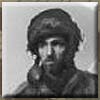 |
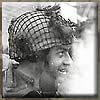 |
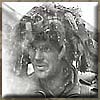 |
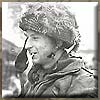 |
| Menu: |
| Home |
| Store |
| Buying |
| X-Sales |
| Info |
| FAQ's |
| Contact |
| Links |
Kings Shropshire Light Infantry Regiment Cap Badge WW1 WW2: British Army infantry cap badge for the Kings Shropshire Light Infantry Regiment. I think it is of WW2 origin but it could date to WW1, so would welcome any comments. In very good condition. Nice strong metal cap badge although slider is bent at 90 degrees.: Details of regiment below: The King's Shropshire Light Infantry (KSLI) was formed in 1881 by the amalgamation of the 53rd (Shropshire) Regiment and the 85th King's Light Infantry. Colonel William Whitmore of Bridgnorth, Shropshire, raised the 53rd Regiment in 1755. Initially the 55 th Foot it was renumbered the 53rd in 1757 and first saw action in the American War of Independence (1775-83). In 1782 the name of the Regiment was changed to the 53rd (Shropshire) Regiment; although it was probably not until 1789, on its return from North America, that it paid its first visit to Shropshire. During the war with the French Republic (1793-97) the Regiment won battle honours at ‘Nieuport' - an honour unique to the Regiment — ‘Tournay' and ‘Saint Lucia'. A second battalion of the Regiment was formed during the Napoleonic Wars, serving with distinction in the Peninsula. The 85th Regiment was raised at Shrewsbury in 1759, saw action in Europe in the Seven Years' War (1756-63) and was disbanded in 1763, only to be raised again in 1779. However, when sailing home from the West Indies in 1783 the troopship foundered off Newfoundland and 300 Officers and men of the 85th were drowned and the Regiment was again disbanded. The 85th was raised yet again in 1793, fought from then until 1809, when it became a regiment of Light Infantry, in the Peninsula War. In 1814 the 85th sailed for North America, war having broken out with the Americans in 1812, and was part of the force, which captured Washington and burned its public buildings. When the Presidential Mansion was restored it was painted white and has been known as the ‘White House' ever since. In 1815 the 85th was granted the motto ‘Aucto Splendore Resurgo' and, in 1821, was renamed The King's Light Infantry. The King's Light Infantry next saw action in the Second Afghan War (1878-79) and the following year amalgamated with the 53rd to form The King's Shropshire Light Infantry (53rd & 85th). The 1st Battalion of the new Regiment took part in the campaign in the Sudan in 1885 and, in 1894, was to earn the gratitude and respect of the Hong Kong government for its work in heavily infected areas of the colony during the plague. The 2nd Battalion served throughout the South African War, for which members of the Rifle Volunteer Corps from both Shropshire and Herefordshire reinforced it. In 1908 the existing Volunteer Forces in both counties were re-formed as 4th Battalion The King's Shropshire Light Infantry and 1 st Battalion The Herefordshire Regiment. The Great War saw the Corps of the King's Shropshire Light Infantry expand to a total of 15 battalions, nine of which saw action. The Regiment served in France, Flanders, Hong Kong, Singapore, Macedonia, Palestine, Egypt and Gallipoli. The 1st/4th Battalion was awarded the Croix de Guerre avec Palme for its action at the Battle of Bligny on 6 th June 1918. Between the wars the Regiment consisted of two regular battalions, the 1st and 2nd, and two Territorial Army battalions, the 4 th Battalion The King's Shropshire Light Infantry and the 1st Battalion The Herefordshire Regiment. The 1st Battalion spent most of the inter-war years in India, whilst the 2nd Battalion, after a brief period in Germany and England, was in the West Indies at the outbreak of the Second World War. In 1939 the 1st Battalion, having returned from India, was sent to France as a part of the British Expeditionary Force and subsequently formed part of the rearguard covering the withdrawal through Dunkirk. The Battalion remained in England until 1943 when it was sent to Tunisia and finished the war in Italy having fought its way up the spine of Italy from Anzio. The 2 nd Battalion returned from the West Indies in 1942 and was not committed until 1944 when it landed in France on D Day, to be followed four days later by two of the Territorial Army battalions. All three battalions took part in the battles in and beyond Caen and fought their way through the Low Countries to Germany In 1947 the Territorial Army was reorganized and the Herefordshire Regiment was renamed The Herefordshire Light Infantry in recognition of its wartime service, and to emphasize its place as part of the Corps of The King's Shropshire Light Infantry. Having served in the Middle East the two regular battalions returned to England where, in spring 1948, they amalgamated to form a new 1st Battalion. The 1st Battalion moved to Hong Kong later that year and subsequently had the distinction of being the longest serving infantry battalion in the Korean War (1950-53). From 1955 to 1957 the Battalion was in action against the Mau Mau in Kenya and, when it became part of the new Light Infantry regiment in 1968, was serving in Malaya with companies detached on internal security duties in Mauritius.
Please contact me if you require to purchase this item or have any other question. |
||||||||||||||||||||||||||||||
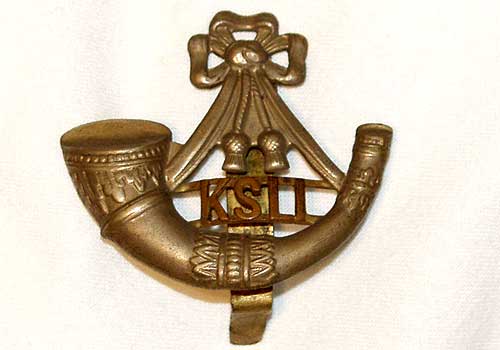 |
||||||||||||||||||||||||||||||
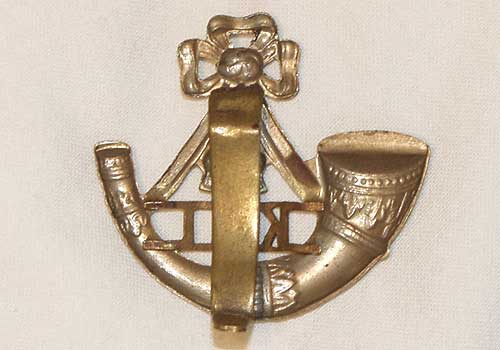 |
||||||||||||||||||||||||||||||
